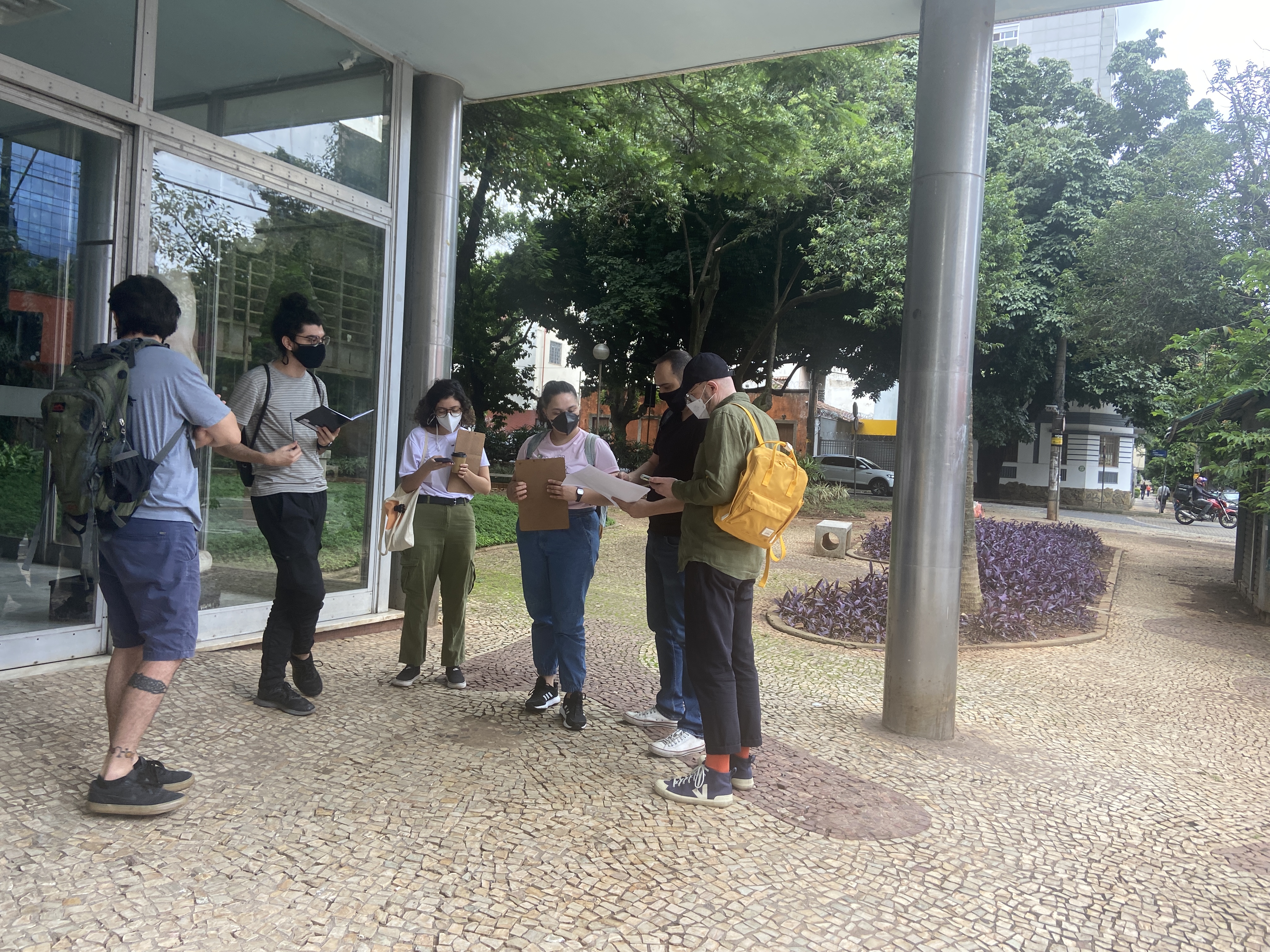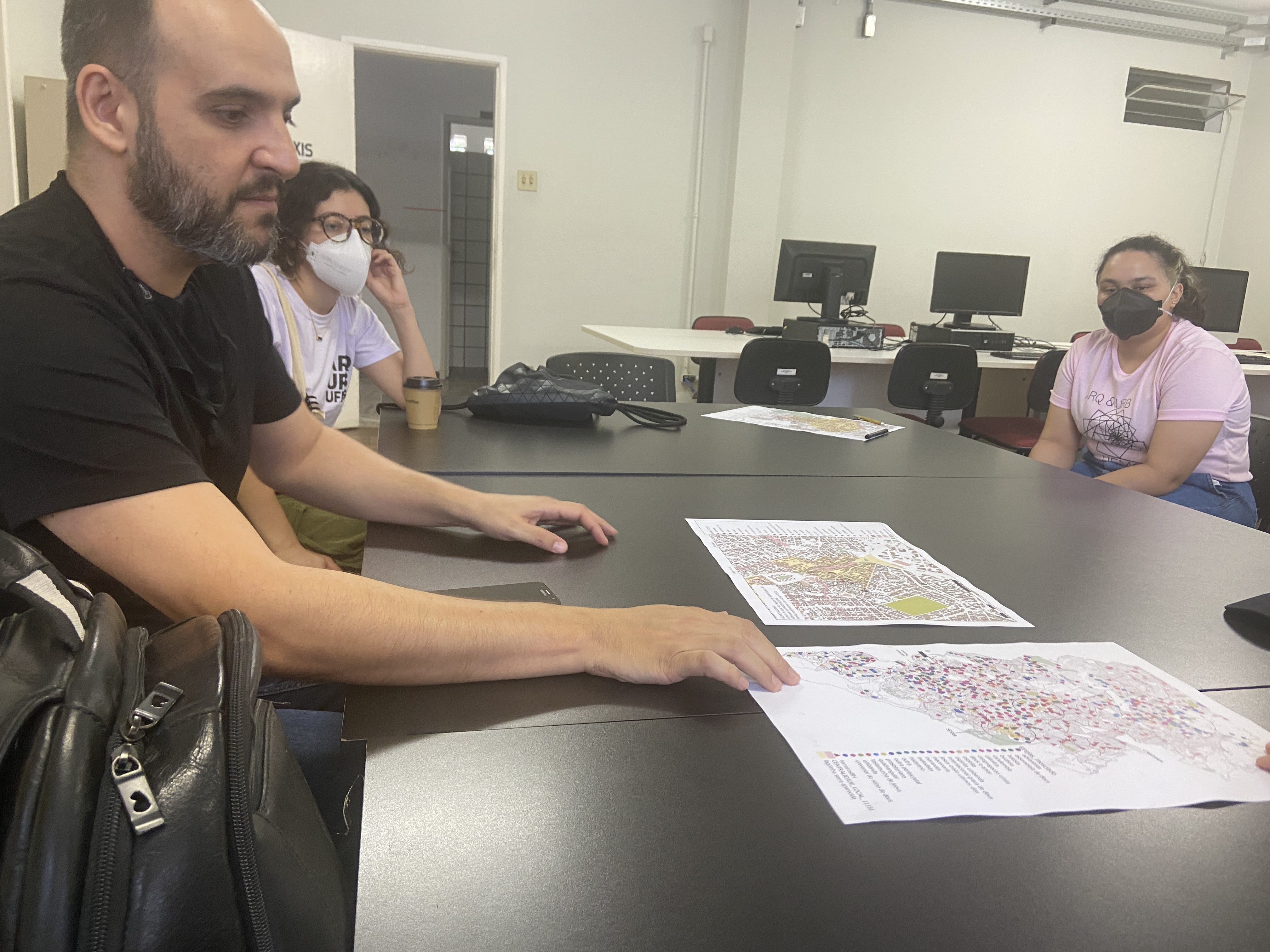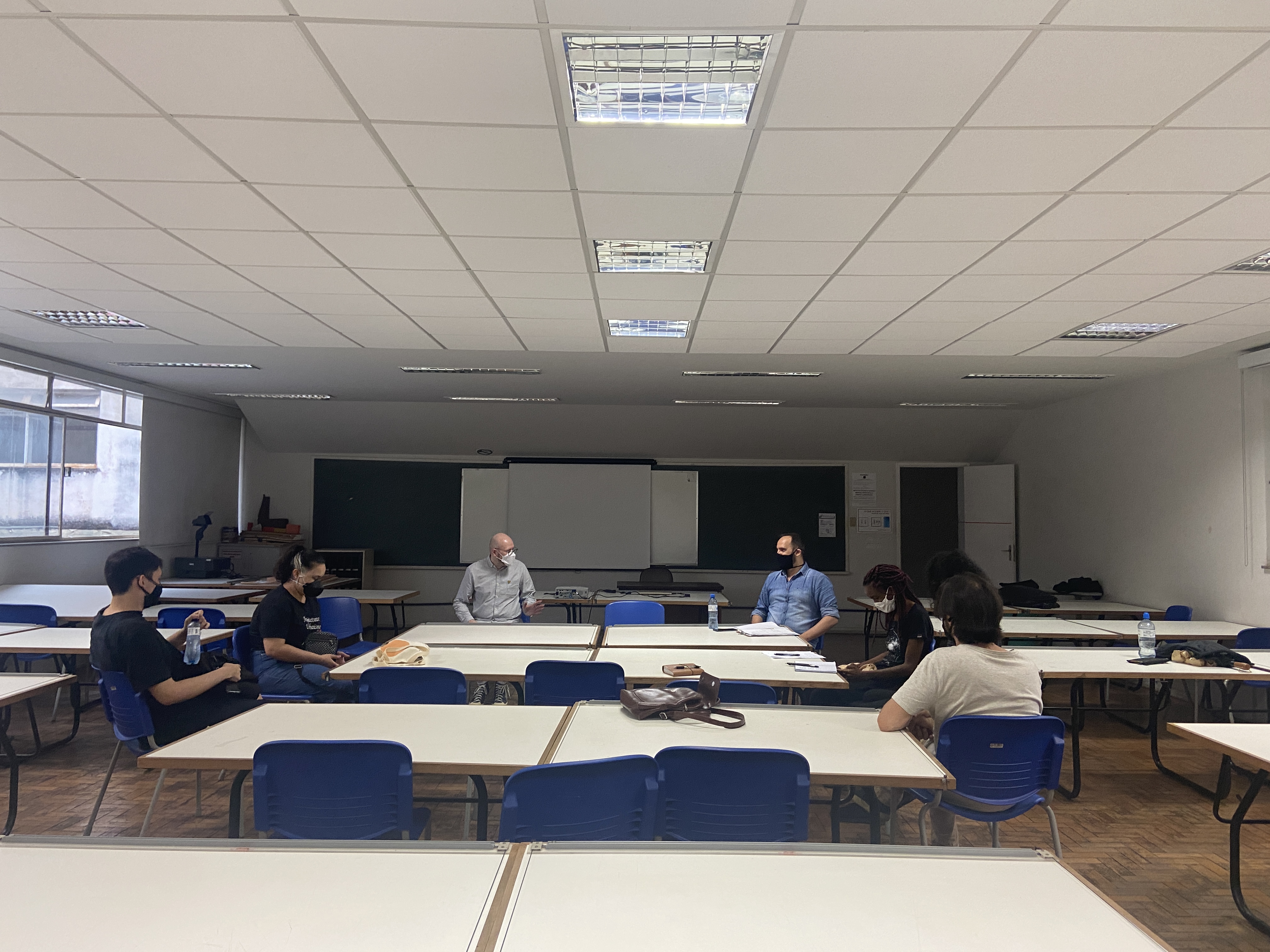Church
03.05.2022During my first two weeks, I accompanied a small group of
researchers studying the architecture of Pentacostal religion in Belo Horizonte.
The project, let by a visiting Polish professor and my advisor here, is attempting
to map these sites of worship.
Tagging along for this experience taught me a lot about
religions beyond Pentacostal, especially the Afro-Brazilian faiths of Candomblé
and Congado. Myself, along with the lead researchers and five undergraduate research
assistants, visited four different sites of worship and a community center to
get a better understanding of the physical presence of these religions.
However, what I found most interesting was what emerged during
conversation with the undergraduate research assistants (bolsistas) in
the debrief of these site visits. After our jaunts around the city, we would
convene back at the School of Architecture and discuss. While the bolsistas are undergraduates, their ages range from 21-27. Some of them are from Belo Horzionte,
one from Sao Paulo, one from another city in Minas Gerais, and one from the
rural countryside.
Unanimously, they all said that they were raised in Catholic
families and strongly identified with Catholicism when they were growing up.
However, after leaving their homes and moving to Belo Horizonte for college, they
started to question their upbringing, and, soon after all of them disassociated
from religion.
Some reasons for this were that there were too many rules in
the Catholic church, that Catholicism is homophobic, that it has been the
source of much oppression. One said that when they started to learn the true
history of Catholicism, they rejected it because it was so contradictory with
what they were taught.
A two now identify now as Agnostic, and the others as
Aethiest. They find religion interesting, but have distanced themselves from
their Catholic roots.
What connected them, was their desire for spirituality. Not
all believe in a higher spirit, but some definitely affirmed what I feel – that
there is a place for spirituality in life. One talked about going into a Terreiro,
a Congado site of worship, and feeling a rush of overpowering emotion.
She said she seeks that feeling, but doesn’t want it in the context of the
Catholic church.
In these debriefs, I started to feel more connected to my
peers than I did before. Our generation is coming of age at a time of
unprecedented departure from formal religion. Yet, we are no different from our
ancestors who sought rituals to guide them through the rhythm of daily life. I
think as humans we need spaces that encourage reflection and meditation, where
we can be in the company of others and revel in the beauty and chaos of life.
A week after these site visits, I’ve been contemplating their
comments and have come to three core reflections.
The first is that I am very interested in how architecture
and urbanism students are interpreting the world around them. One student is
planning on going to Sao Paulo next month for a Harry Styles concert and was
able to describe that her car was “overheating” because she listened to Billie
Eilish’s most recent single, OverHeated. (the car was ok in the end!). What kind
of spiritual space does she seek? As a openly queer woman, what would a site of
worship look like to her that could guide her through life, provide community,
and ground her in the uncertainties of life? As an architecture student
herself, how would she design a “church”?
My second reflection is that I am feeling a larger interest
in exploring the design of spiritual spaces. One day, when I was cursing profoundly
behind my mask at something I don’t remember, I came across a huge basillica
and decide to step inside. Simply passing the threshold into the quiet,
cavernous, sacred space lowered my blood pressure, reminded me the scale of
life, and helped calm me. In the presence of four other worshippers scattered
around the church, I felt an appreciation for this space. Free of charge, I could
enter and escape the chaos of daily life, of the street. What is the potential
of sacred spaces in the city?
Finally, perhaps other forms of spirituality can be found in
social revolution. In one article about the decline of GenZ participation in
formal religion, a researcher Elizabeth Drescher found that many of her
students, “have found that in a spiritually rich Black Lives Matter movement
and other social justice causes. [...] Youth participation in the Black Lives
Matter movement comes from a well of moral and ethical hunger.”1
In an On Being interview with psychotherapist Esther Perel, she
says, “You know, when people are engaged in revolutionary movements, they feel
erotic.” Connecting the feeling of eroticism to spirituality, she says, “My
work is about eroticism. It is about how people connect to this quality of
aliveness, of vibrancy, of vitality, of renewal. And that is way beyond the
description of sexuality. And it is mystical. It is actually a spiritual,
mystical experience of life. It is a transcendent experience of life, because
it is an act of the imagination.”2
What will spirituality look like in the future and where
will it be housed, where will it land?
1. https://www.deseret.com/indepth/2020/9/13/21428404/gen-z-religion-spirituality-social-justice-black-lives-matter-parents-family-pandemic
2. https://onbeing.org/programs/esther-perel-the-erotic-is-an-antidote-to-death/

Research group prepping for a site visit
![]() Looking at a map of our site visit with the research lead and assistants
Looking at a map of our site visit with the research lead and assistants
![]() Inside a Terreiro
Inside a Terreiro
![]()
An architectural rendering for a Terreiro’s rehabilitation alongside a poster of a participant during the religious ceremony
![]() Debriefing after a site visit
Debriefing after a site visit
![]()
Our research group at a center for community organizing
 Looking at a map of our site visit with the research lead and assistants
Looking at a map of our site visit with the research lead and assistants Inside a Terreiro
Inside a Terreiro
An architectural rendering for a Terreiro’s rehabilitation alongside a poster of a participant during the religious ceremony
 Debriefing after a site visit
Debriefing after a site visit
Our research group at a center for community organizing